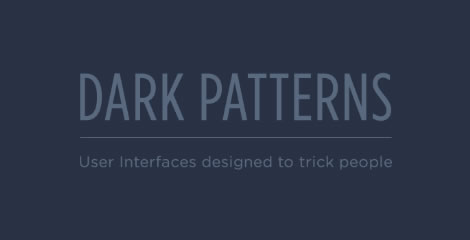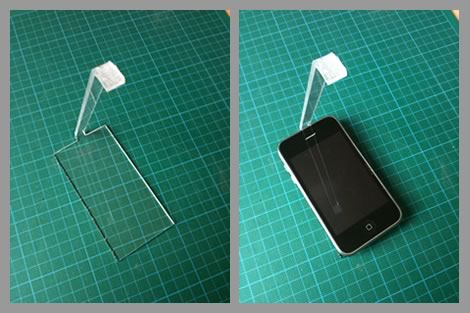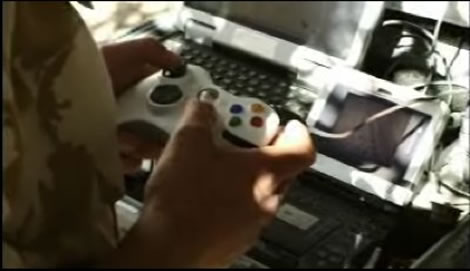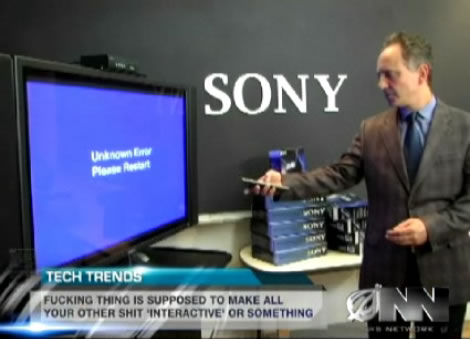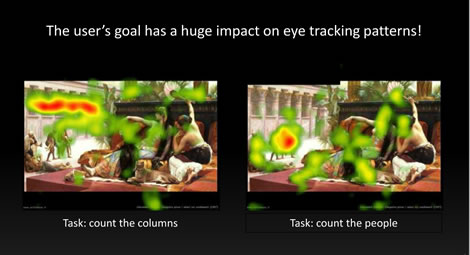Here’s a few of the most popular posts I’ve written this year, enjoy!
Dark patterns: user interfaces designed to trick people
I first came up with the term “Dark Patterns” back in July 2010, and it’s great to see this side project become so successful. Together, my two Dark Patterns slidecasts (one for designers and one for brand owners) have received almost 100,000 views on slideshare in the last 3 months, which is pretty amazing. I’d love to take all the credit myself, but really it’s a community project. Huge thanks to all the commenters and contributors here on 90% of everything, on Hacker News, Reddit and of course on the Dark Patterns Wiki itself.
The reconstructive nature of human memory
In 1974, Loftus and Palmer showed 150 participants a film of a traffic accident. Immediately afterwards, they gave them a questionnaire, containing a load of dummy questions and one question of interest. One group was asked “About how fast were the cars going when they hit each other?”, while another group was asked “About how fast were the cars going when they smashed each other?” (emphasis added). 1 week later they were all asked if they remembered seeing any broken glass in the video. Significantly more people in the “smash” condition answered “yes”. This article discusses some of the implications of this for UX research.
If you were going to design a paywall, is this how you’d do it?
In the comments of this article there were some really good suggestions for how to improve The Times’s paywall. Just two weeks later, they updated their paywall UI, making it match some of the suggestions put forward. Just a coincidence? Maybe. Since then, they’ve barely changed the paywall at all, which is rather shortsighted of them given that they’ve put all their eggs in that basket.
Make your own iPhone usability testing sled for £5
Mobile testing sleds are the little devices you use to mount cameras onto handsets during mobile usability testing. They’re pretty unremarkable pieces of plastic until one day you need to do some mobile app usability testing and you realise how indispensable they are. Also check out Belén Barros Pena’s tip on recording from two webcams.
Anatomy of the goodreads.com friend-spam dark pattern
Yes, more Dark Patterns. Goodreads.com noticed they were listed on darkpatterns.org and stated on 11th December that “Clearly we can make the copy on that checkbox more clear, and will do so by next Tuesday’s release.” The very next day, Jeffrey Zeldman was caught out. At the time of writing, this issue does not seem to be fixed, and yet another Dark Pattern has been pointed out on goodreads.com.
Xbox controllers used in the military: life mimicking art?
It’s unnerving to see that one of the levels from Call of Duty MW2 is based on real-life footage from an AC130 carrying out an attack in Afghanistan – seriously bad taste. Then, when you consider the fact that modified Xbox controllers are now used in the military to control real-life UAVs, the whole thing starts to feel kind of surreal.
Sony, Sony what have you done?
The new Sony / Google TV product announced in October 2010 looks, quite hilariously, like a parody from The Onion (pictured). This was also the only time I’ve ever beat John Gruber off-the-bat, who (coincidentally) published an almost identical article three days later.
What you need to know about eye tracking
I’ve noticed that most people want to be given a binary answer about eye tracking – is it good, or is it rubbish? The reality isn’t so simple, but it’s an indisputable fact that eye tracking is often misunderstood, misused and abused. This presentation explains 5 common misconceptions about eye tracking.
That’s the lot. Want more? Check out the big list of all the posts I’ve ever written on 90percentofeverything.com.
